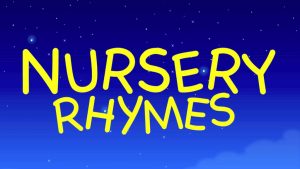
The catchy music of the nursery rhyme Sing a Song of Six Pence and school bus youtube song has toddlers and adults uttering medieval language that nearly has no meaning today. Originating as an adult rhyme its ancient origins have only been inferred. Shakespeare used pieces of the nursery rhyme in his play “Twelfth Night.” A Fool acts foolish, and Sir Andrew swears to his excellent singing voice while Sir Toby Belch offers a sixpence to hear the song. Shakespeare did not originate the rhyme, he just used it for the play.
Black Birds
IN modern times eating black birds in the USA continues to be unheard of but in Europe, it’s a gourmet’s delicacy. At one-time language remained mostly oral and recipes, advice, and how to get passed on to apprentices and families, Music, rhythm, and repetition made such knowledge easy to remember. Chefs who study medieval cookbooks have confirmed that recipes for four and twenty blackbirds baked in a pie exist. It started with an enormous pie crust draped on a wooden scaffold. Hollow inside the live black birds was placed in the pie. Appearing to be baked the chef delivered the pie to the table where a concealed trap door was opened during the dinner with royalty. The black birds flew out granting the guests exquisite entertainment. According to the Oxford Book of Nursery Rhymes, the recipe became found in the medieval 1549 Italian cookbook Epulario. Later England translated the book into The Italian Banquet by Giovanni de Roselli in 1598 which can be bought today at Amazon.
Adaptations
The original origins of the rhyme remain in the ancient mists of time. Different European cultures make mention of the earlier parts of the nursery rhyme for several centuries in reference to food, recipes, and dinners. Then in the 1700s printed versions of the rhyme with the same repetition and rhythm appear but birds have been replaced with naughty boys. The text classifies as a nursery rhyme and found in the book Gammer Gurton. On and off for the next couple of centuries, the rhyme becomes revised.
Modern Days
The rhyme Sing a Song of Sixpence appears on kids rhymes videos and continues to be a favorite. Artists have displayed the images mentioned in the rhyme many ways. Teachers have used the rhyme to teach concepts in a variety of ways. In Britain where the poem originated it has been used for the concepts of sequencing, teaching high-frequency words in the language, and counting numbers on the pence. The USA uses the language of the rhyme to practice translating words to math by adding a series of questions. Language classes teach a bit of history with its references to kings, queens, counting houses and pence. Many education houses have made eBooks with the text for young students, so they have their own personal book.
Conclusion
Sing a Song of Six Pence has moved from a medieval recipe to kids rhymes videos making it at least 500 years old. Shrouded in mystery, it lends itself to a new interpretation each generation.